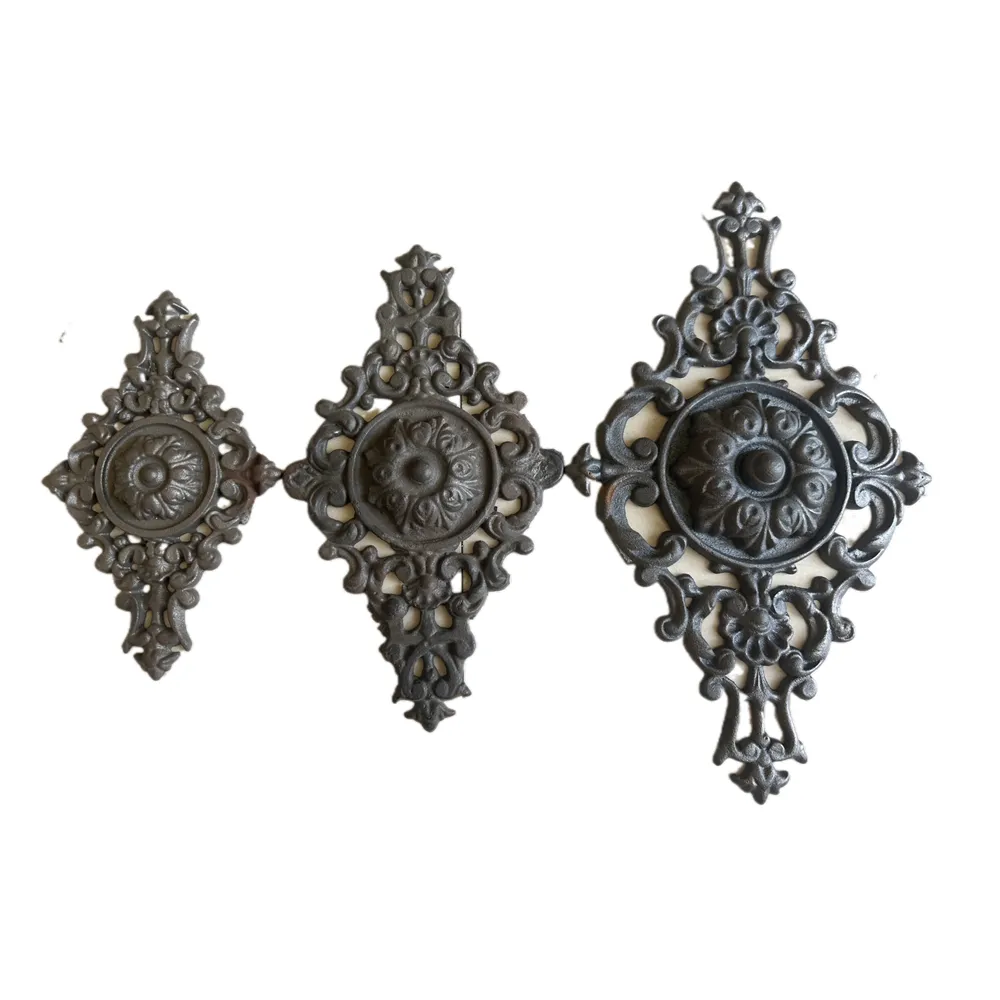cast iron decorative finial
The Elegance of Cast Iron Decorative Finials
Cast iron decorative finials are an exquisite element that has graced architecture and design for centuries. Serving not only as a functional component but also as an aesthetic enhancement, these ornamental pieces have captivated the hearts of many who appreciate craftsmanship and historical significance. In this article, we will explore the charm and versatility of cast iron finials, their various applications, and why they continue to be a favored choice in modern design.
Historical Significance
The use of cast iron in decorative art dates back to the early 19th century, during the Industrial Revolution when advancements in metallurgy allowed for mass production. Finials, derived from the Latin word 'finis,' meaning 'end,' were traditionally placed at the tops of structures such as roofs, gates, and railings, providing a visually striking conclusion to architectural elements. These pieces were often designed in elaborate styles, reflecting the artistic movements of their time, from Gothic revival to Victorian elaborate motifs.
Design and Craftsmanship
One of the most appealing aspects of cast iron finials is their diverse range of designs. Artisans skillfully mold the metal into intricate shapes, showcasing everything from floral patterns to mythical creatures. Each finial tells a story, encapsulating the artistic vision of the creator. The durability of cast iron ensures that these pieces withstand the test of time, making them ideal for both historic restoration projects and new constructions.
cast iron decorative finial

The characteristic weight and texture of cast iron lend an air of solidity and permanence. Unlike lightweight alternatives, cast iron carries a sense of gravitas that can anchor a design and create a focal point. As a result, finials made from this material are often used to complement wrought iron fences, ornate gate posts, and even on the tops of decorative columns.
Modern Applications
Today, cast iron decorative finials are utilized in a variety of settings. Homeowners and designers are increasingly incorporating these elements into gardens, allowing them to enhance gates, fences, and trellises. In urban settings, the historical charm of cast iron can soften the harshness of concrete and steel, turning bleak spaces into inviting areas of beauty. Finials can also be used in interior design, adorning lamp stands, curtain rods, and even chandeliers, adding an extra layer of sophistication to modern living spaces.
Moreover, the trend towards sustainability and the preservation of heritage has led to a resurgence in the popularity of cast iron decor. Many homeowners are choosing to restore period features in their homes, and decorative finials play an essential role in maintaining the historical integrity of these properties. They are often replicated to match historical designs, ensuring that even new installations adhere to the authenticity of the period.
Conclusion
In summary, cast iron decorative finials represent an enduring balance between functionality and artistry. Their historical roots, combined with a wide range of design possibilities, make them a timeless choice for both classic and contemporary aesthetics. By incorporating these unique elements into your home or landscape design, you can pay homage to centuries of craftsmanship while adding a touch of elegance that will never go out of style. Whether you are restoring a historic building or enhancing a modern property, cast iron finials offer a remarkable way to express artistic vision and appreciation for heritage, making them a beloved choice for generations to come.
-
Wrought Iron Components: Timeless Elegance and Structural StrengthNewsJul.28,2025
-
Window Hardware Essentials: Rollers, Handles, and Locking SolutionsNewsJul.28,2025
-
Small Agricultural Processing Machines: Corn Threshers, Cassava Chippers, Grain Peelers & Chaff CuttersNewsJul.28,2025
-
Sliding Rollers: Smooth, Silent, and Built to LastNewsJul.28,2025
-
Cast Iron Stoves: Timeless Heating with Modern EfficiencyNewsJul.28,2025
-
Cast Iron Pipe and Fitting: Durable, Fire-Resistant Solutions for Plumbing and DrainageNewsJul.28,2025
-
 Wrought Iron Components: Timeless Elegance and Structural StrengthJul-28-2025Wrought Iron Components: Timeless Elegance and Structural Strength
Wrought Iron Components: Timeless Elegance and Structural StrengthJul-28-2025Wrought Iron Components: Timeless Elegance and Structural Strength -
 Window Hardware Essentials: Rollers, Handles, and Locking SolutionsJul-28-2025Window Hardware Essentials: Rollers, Handles, and Locking Solutions
Window Hardware Essentials: Rollers, Handles, and Locking SolutionsJul-28-2025Window Hardware Essentials: Rollers, Handles, and Locking Solutions -
 Small Agricultural Processing Machines: Corn Threshers, Cassava Chippers, Grain Peelers & Chaff CuttersJul-28-2025Small Agricultural Processing Machines: Corn Threshers, Cassava Chippers, Grain Peelers & Chaff Cutters
Small Agricultural Processing Machines: Corn Threshers, Cassava Chippers, Grain Peelers & Chaff CuttersJul-28-2025Small Agricultural Processing Machines: Corn Threshers, Cassava Chippers, Grain Peelers & Chaff Cutters












